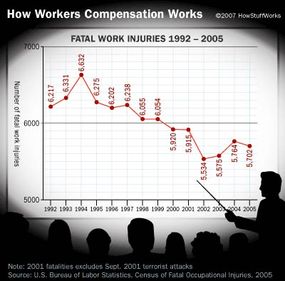
Workers compensation is the oldest insurance program in the United States. With the rapid growth of industrial jobs in the early twentieth century, workplace injuries became more common and the dangers more apparent of working in factories, with heavy machinery or in hazardous conditions. A system was needed to deal with these injuries and to compensate the workers who suffered from them.
Prior to the establishment of workers compensation, an injured or disabled worker had to sue his or her employer to recover wages and future earnings and to pay for medical expenses. Workers usually lost these cases, which damaged the employer/employee relationship and contributed to mistrust between employers and their workers. Employers frequently used three defenses in lawsuits by employees [ref]:
Advertisement
- Assumption of risk - The injury was from a normal and accepted danger associated with the job.
- The fellow worker rule - The injury was caused by a fellow worker’s negligence.
- Contributory negligence - The worker’s negligence contributed to the accident.
Workers had to wait a long time for any possible financial compensation, and if someone were too injured to work, the inability to earn a living, combined with accumulating lawyer fees, could be devastating. When workers did win in court, judgments against employers were frequently substantial, though the amounts didn’t correspond to a defined scale or system.
Europe paved the way for American workers compensation programs. In 1884 Germany passed Sickness and Accident Laws, and England established workers compensation in 1897. The first U.S. workers compensation law was passed in 1908, covering federal workers. Between 1911 and 1920, most states adopted their own workers compensation programs modeled on those in Germany and England.
Now we know the history of workers compensation and why we have it. But how does it work? Read on to learn how this program works and what kinds of injuries it covers.
Advertisement








